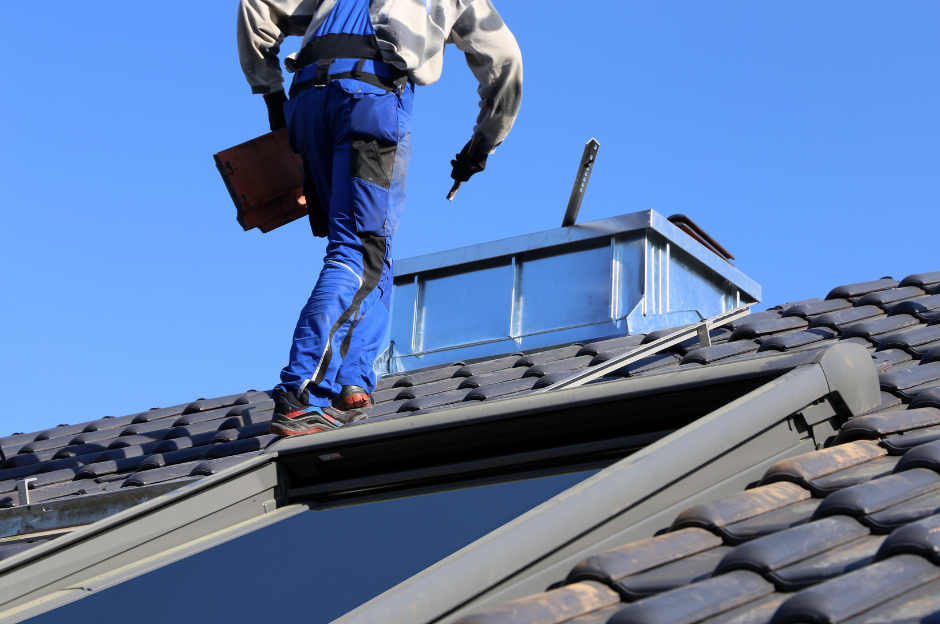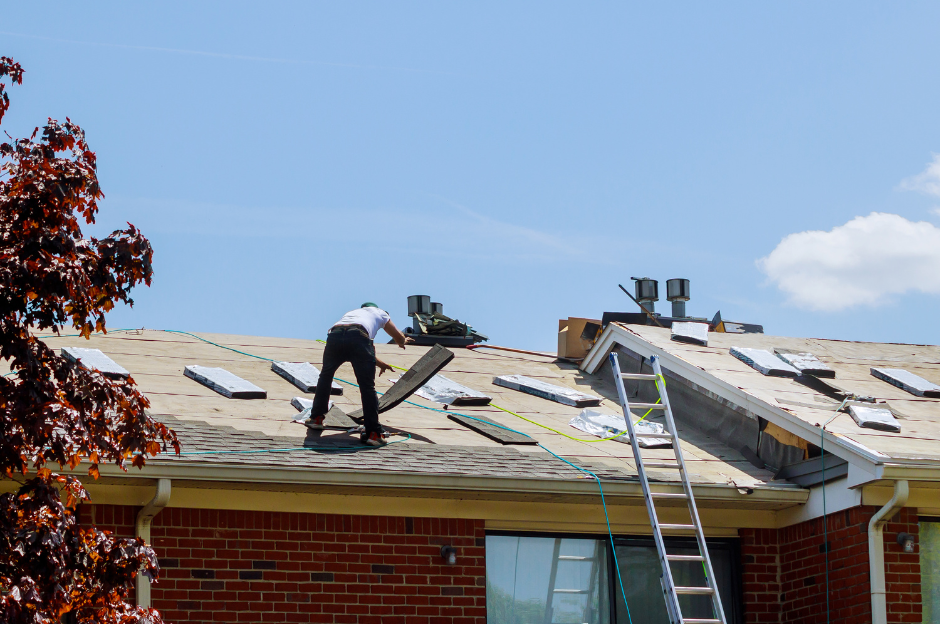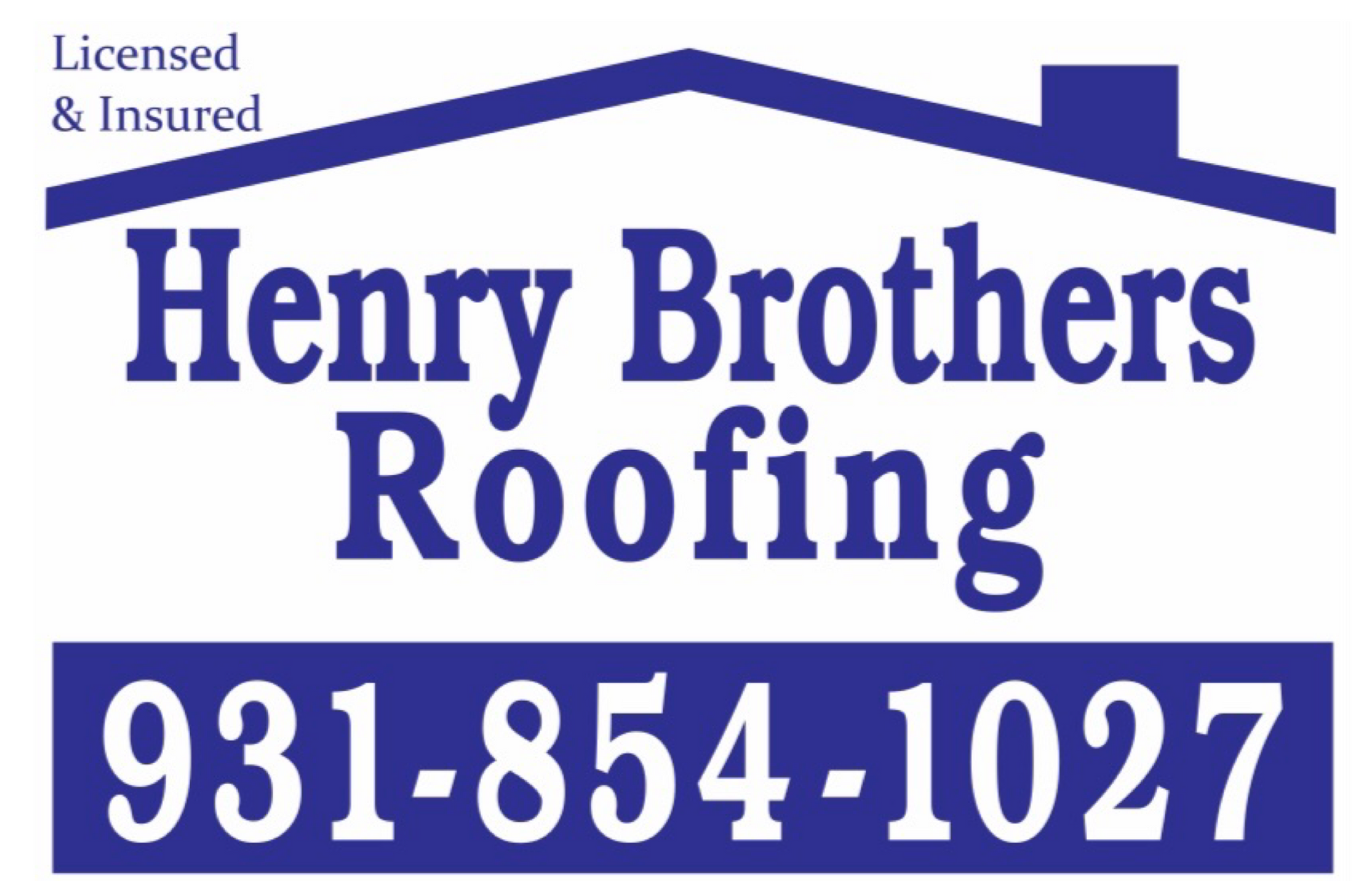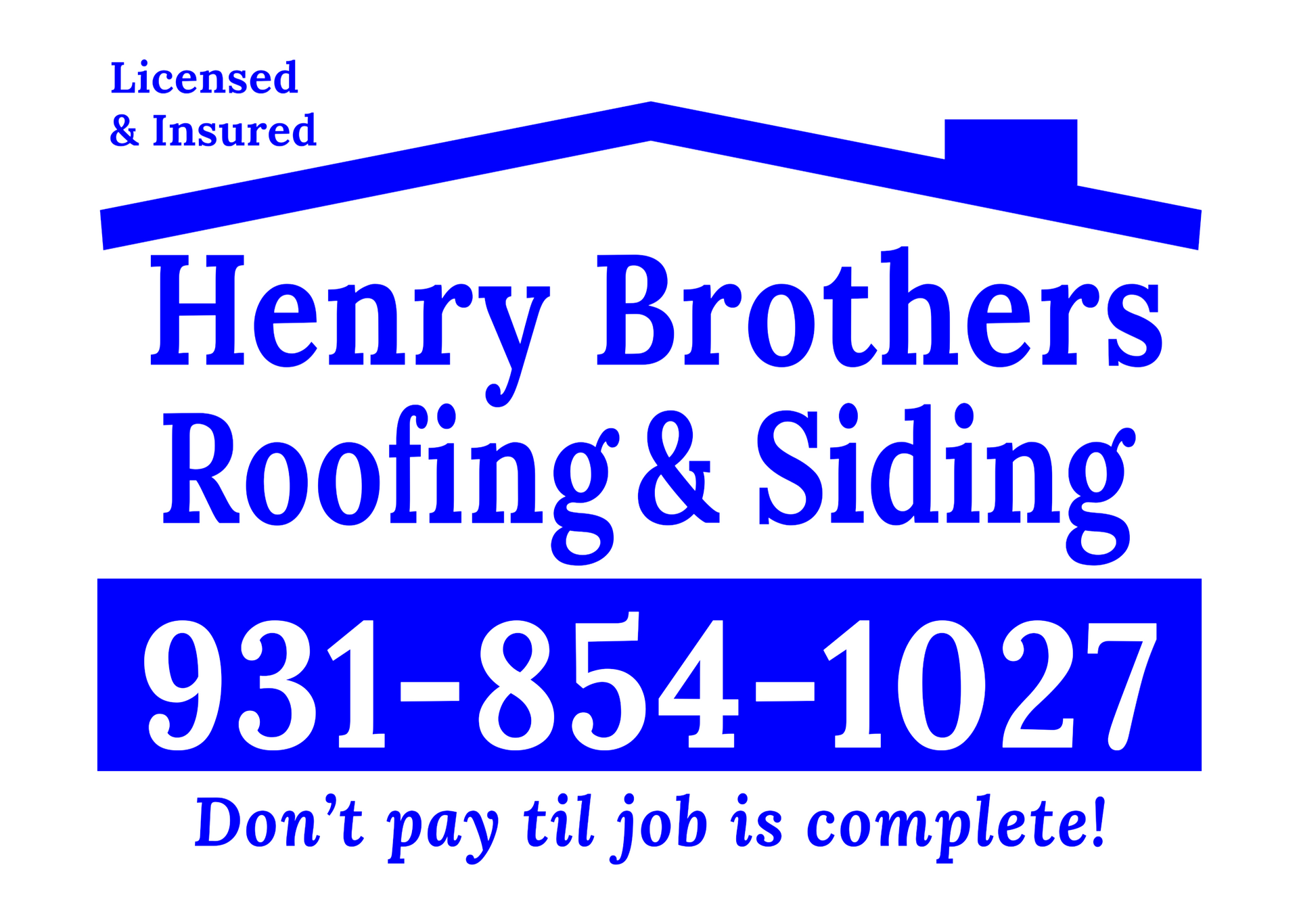Weathering the Storm: Understanding the Impact of Weather on Your Roof and How to Prepare for Rain, Hail, and Snow
February 2, 2024

Your roof is your home's first line of defense against the elements, providing shelter and protection from rain, hail, snow, and harsh weather conditions. However, exposure to the elements can take a toll on your roof over time, leading to damage, leaks, and costly repairs. In this blog post, we'll explore the impact of weather on your roof and discuss practical steps you can take to prepare for rain, hail, snow, and other weather-related challenges.
Understanding the Impact of Weather on Your Roof:
Weather can have a significant impact on the condition and durability of your roof. Different types of weather conditions pose unique challenges and risks to your roof's integrity:
Rain:
Rainwater is one of the most common sources of damage to roofs. Over time, rain can cause shingles to deteriorate, roof flashing to corrode, and water to seep into cracks and crevices, leading to leaks and water damage. Heavy rainstorms, particularly those accompanied by strong winds, can exacerbate these issues and increase the risk of roof damage and water infiltration.
Hail:
Hailstorms pose a significant threat to roofs, especially in regions prone to severe weather. Hailstones can vary in size from small pellets to large chunks of ice, causing dents, cracks, and punctures in roofing materials. Hail damage can weaken shingles, compromise their protective layers, and shorten the lifespan of your roof. In severe cases, hail damage may necessitate roof repairs or replacement to restore the roof's structural integrity and water resistance.
Snow:
Snow accumulation on your roof can pose several challenges and risks, particularly in regions with cold climates and heavy snowfall. The weight of snow can exert significant pressure on your roof's structure, leading to stress, sagging, and potential structural damage. Additionally, melting snow can seep into roofing materials, causing water damage, ice dams, and leaks. Proper snow removal and maintenance are essential to prevent roof damage and protect your home from water infiltration during the winter months.
Preparing Your Roof for Rain, Hail, and Snow:
To protect your roof from the damaging effects of rain, hail, and snow, consider the following proactive measures:
Schedule Regular Roof Inspections:
Regular roof inspections are essential for identifying potential issues and addressing them before they escalate into more significant problems. Hire a professional roofing contractor to conduct a thorough inspection of your roof at least once a year, ideally before the start of the rainy or winter season. During the inspection, the contractor will assess the condition of your roof, identify any signs of damage or deterioration, and recommend necessary repairs or maintenance.
Maintain Your Gutters and Downspouts:
Proper gutter maintenance is critical for ensuring effective water drainage and preventing water damage to your roof and home's foundation. Clean your gutters and downspouts regularly to remove debris, leaves, and other obstructions that can block the flow of water. Ensure that gutters are securely attached and free of leaks or damage. Consider installing gutter guards to prevent debris buildup and minimize the need for frequent cleaning.
Repair Roof Leaks Promptly:
If you notice signs of roof leaks, such as water stains on your ceiling, dampness or mold growth in your attic, or visible signs of water infiltration, take immediate action to address the issue. Contact a professional roofing contractor to inspect the roof, identify the source of the leak, and perform necessary repairs. Ignoring roof leaks can lead to further damage, mold growth, and costly repairs down the line.
Reinforce Roof Flashing:
Roof flashing is designed to prevent water from seeping into vulnerable areas of your roof, such as valleys, joints, chimneys, and vents. Inspect roof flashing regularly for signs of damage, corrosion, or deterioration, and repair or replace damaged flashing as needed. Consider upgrading to durable, weather-resistant flashing materials, such as galvanized steel or aluminum, to enhance your roof's protection against water infiltration.
Trim Overhanging Tree Branches:
Overhanging tree branches can pose a risk to your roof during storms, high winds, and heavy snowfall. Trim back tree branches that hang over your roof to prevent them from falling and causing damage. Additionally, remove dead or diseased trees near your home that may pose a risk of falling during severe weather events.
Install Impact-Resistant Roofing Materials:
Consider upgrading to impact-resistant roofing materials, such as asphalt shingles with Class 4 impact resistance ratings, metal roofing, or synthetic roofing materials. These materials are designed to withstand hailstorms and severe weather conditions, reducing the risk of damage and extending the lifespan of your roof. Consult with a roofing professional to determine the best roofing materials for your climate, budget, and aesthetic preferences.
Conclusion:
Your roof plays a crucial role in protecting your home and family from the elements, but exposure to rain, hail, snow, and severe weather can take a toll on its integrity over time. By understanding the impact of weather on your roof and taking proactive steps to prepare for rain, hail, and snow, you can safeguard your roof against damage, leaks, and costly repairs. Schedule regular roof inspections, maintain your gutters and downspouts, repair roof leaks promptly, reinforce roof flashing, trim overhanging tree branches, and consider installing impact-resistant roofing materials to enhance your roof's durability and resilience. With proper maintenance and proactive care, you can ensure that your roof remains strong, watertight, and protective for years to come.
Henry Brothers Blog

Multi-family buildings pose unique challenges for roofing—requiring durable, efficient, and cost-effective solutions that serve multiple households simultaneously. Selecting the right system and partner can significantly impact long-term maintenance and energy bills. Common Roofing Challenges in Multi-Family Properties Large surface areas Multiple penetrations (vents, HVAC units) Noise and disruption during installation High foot traffic for maintenance Energy efficiency Efficient Roofing Materials TPO (Thermoplastic Polyolefin): Lightweight, reflective, and energy-efficient. Ideal for flat or low-slope roofs. Modified Bitumen: Offers durability and weather resistance. Works well for larger structures. Metal Roofing: Long-lasting and low-maintenance. Higher upfront costs but excellent ROI. Asphalt Shingles: Budget-friendly and easy to repair. Better for pitched multi-family homes. Affordability Strategies Bulk Purchasing Discounts: Roofers often offer lower rates for large-scale projects. Energy Rebates and Tax Credits: Cool roofing materials may qualify for incentives. Roof Coatings: Extend lifespan and defer full replacements. Preventive Maintenance Plans: Regular inspections reduce major repair costs. Partnering with the Right Contractor Choose a roofing contractor experienced in multi-family dwellings. Look for: References from similar projects Warranty offerings Insurance and licensing Clear timelines and communication protocols

Your roof is one of the most defining features of your home’s architecture. A well-designed roof complements the style, era, and character of your house, enhancing both curb appeal and value. Whether you own a modern home, a Victorian masterpiece, or a Mediterranean villa, choosing the right roofing materials and design is essential. This article explores custom roofing solutions for different architectural styles, ensuring your roof is both aesthetic and functional. 1. Why Custom Roofing Matters A one-size-fits-all approach doesn’t work for roofing. Here's why customization is key: 🏡 Preserves Architectural Integrity The roof should match the home's era and design. A poorly chosen roof can clash with the architecture and reduce property value. 💰 Boosts Home Value & Curb Appeal A well-matched roof enhances visual appeal, making your home stand out. Homebuyers prefer houses with roofs that fit the overall design. 🌦 Enhances Durability & Efficiency Custom roofing accounts for climate, slope, and insulation. Choosing the right materials ensures longer roof life and energy efficiency. 2. Best Roofing Materials for Different Architectural Styles 🏗 Modern & Contemporary Homes Modern architecture focuses on clean lines, minimalism, and energy efficiency. Best Roofing Options: ✅ Flat Roofs – Achieve a sleek, contemporary look. ✅ Metal Roofing – Durable and complements modern aesthetics. ✅ Green Roofs – Eco-friendly and visually striking. ✅ Solar Panels – Integrate renewable energy solutions. 🏰 Victorian & Gothic Revival Homes These homes have steep-pitched roofs, turrets, and elaborate detailing. Best Roofing Options: ✅ Slate Tiles – Classic, long-lasting, and historically accurate. ✅ Wood Shingles – Adds charm and natural beauty. ✅ Decorative Metal Accents – Enhances ornate Victorian designs. 🏝 Mediterranean & Spanish-Style Homes Inspired by European coastal homes, these feature stucco walls and curved archways. Best Roofing Options: ✅ Clay or Terracotta Tiles – Traditional, weather-resistant, and elegant. ✅ Concrete Tiles – Durable and available in various textures and colors. ✅ Synthetic Spanish Tiles – Modern, lightweight alternatives with classic appeal. 🌲 Rustic & Cabin-Style Homes These homes emphasize natural materials and a cozy aesthetic. Best Roofing Options: ✅ Wood Shakes – Blends seamlessly with wooded surroundings. ✅ Metal Roofing (Rustic Finish) – Durable with a weathered, natural look. ✅ Green Roofs – Enhances sustainability and insulation. 🏡 Colonial & Traditional Homes These timeless homes focus on symmetry and classic proportions. Best Roofing Options: ✅ Asphalt Shingles – Affordable and available in classic shades. ✅ Slate Roofing – Elegant and historically accurate. ✅ Copper or Metal Accents – Enhances historic charm. 🏛 Mid-Century Modern Homes This style features low-sloped roofs, large windows, and open spaces. Best Roofing Options: ✅ Flat or Low-Slope Roofs – Clean, minimalistic aesthetic. ✅ Rubber or Membrane Roofing – Ideal for low-pitch roofs. ✅ Green or Living Roofs – Complements eco-conscious designs. 🏰 Tudor-Style Homes Tudor homes have steeply pitched gables and decorative half-timbering. Best Roofing Options: ✅ Wood or Synthetic Shake Shingles – Traditional and authentic. ✅ Slate Roofing – Enhances historic charm and durability. ✅ Architectural Asphalt Shingles – Mimics wood or slate at a lower cost. 3. Custom Roofing Features to Consider Beyond materials, adding customized elements can elevate your roof’s design. 🔹 Roof Color & Texture Dark roofs enhance historic and formal homes. Light-colored roofs reflect heat, ideal for warm climates. Textured materials (slate, shakes) add visual depth. 🏠 Roof Shape & Pitch Steep roofs fit Gothic and Victorian styles. Flat or low-sloped roofs match modern homes. Custom pitches enhance energy efficiency and durability. 🔆 Skylights & Roof Windows Adds natural light and enhances ventilation. Works well in modern, contemporary, and rustic homes. 🌞 Solar Roofing & Smart Technology Solar shingles blend seamlessly into modern & eco-friendly homes. Smart roofing systems adjust ventilation & insulation automatically. 4. Custom Roofing: How to Get Started 1️⃣ Consult a Roofing Expert Work with an architect or contractor specializing in custom roofs. Ensure they understand historical accuracy and climate considerations. 2️⃣ Choose High-Quality Materials Invest in durability, energy efficiency, and aesthetics. Select roofing that aligns with your home’s style and longevity needs. 3️⃣ Consider Long-Term Costs & ROI Some materials have higher upfront costs but last longer and increase home value. Energy-efficient options can reduce heating and cooling expenses. 4️⃣ Verify Local Building Codes Some roofing styles require special permits. Ensure compliance with HOA guidelines and historical district regulations.


